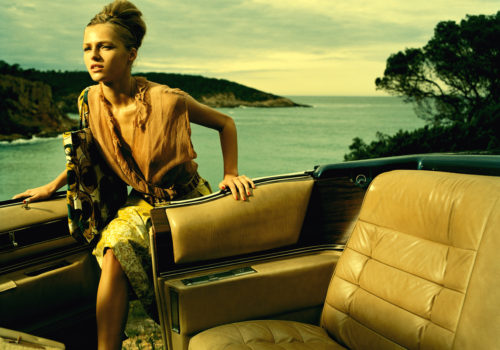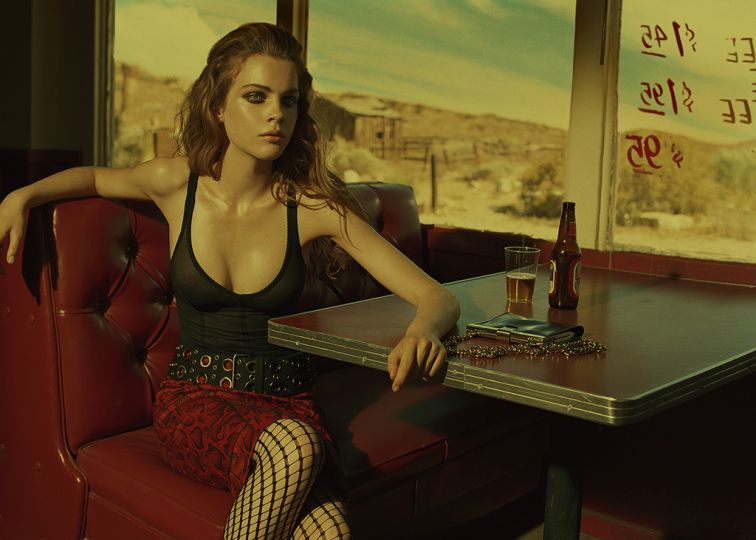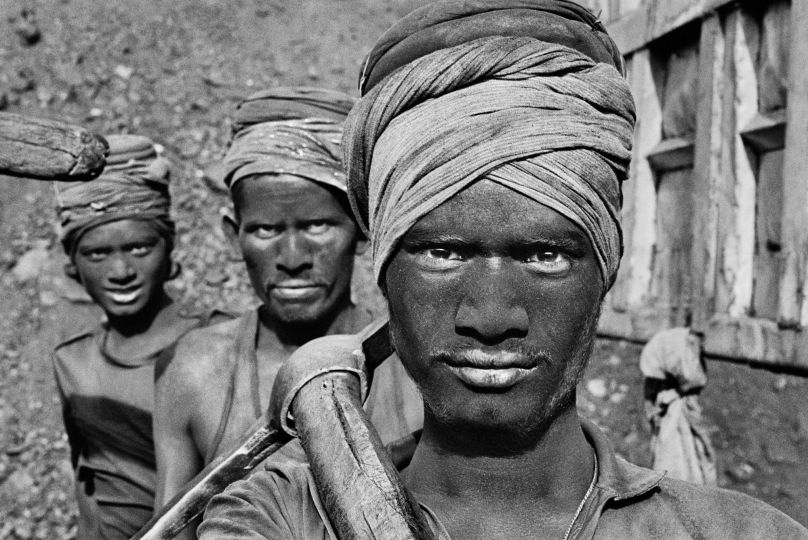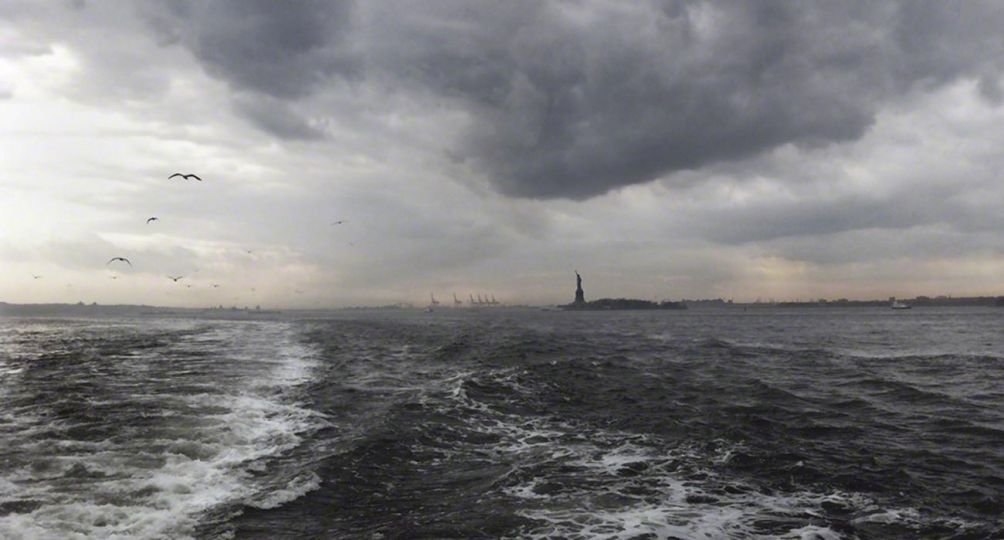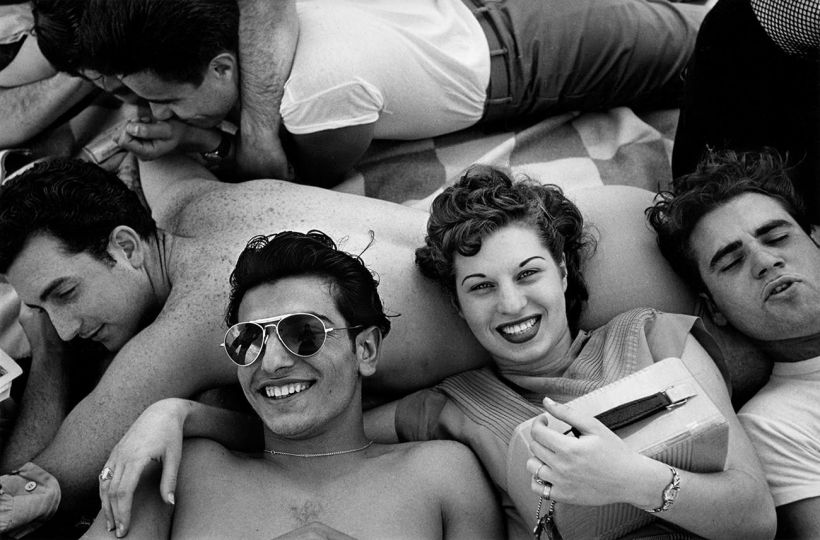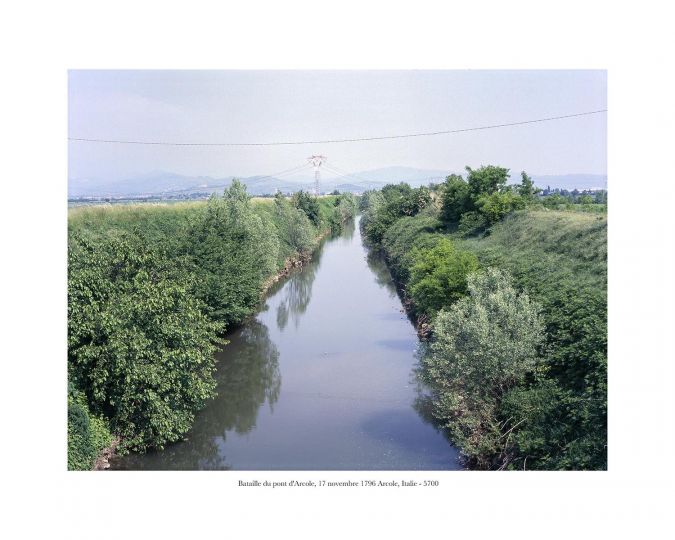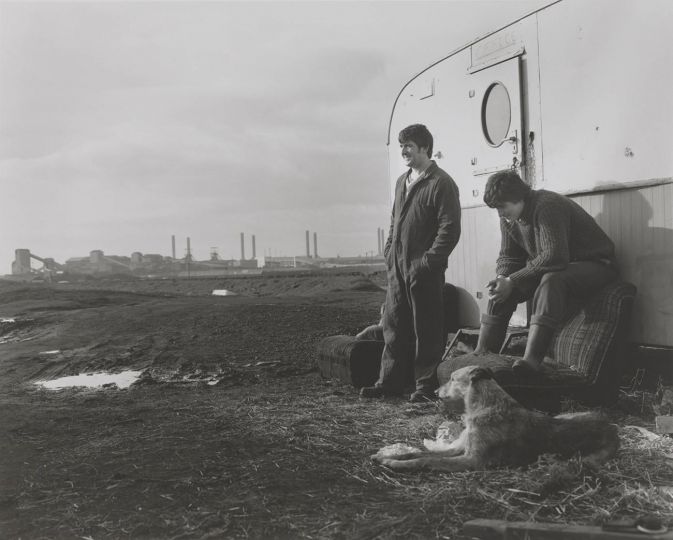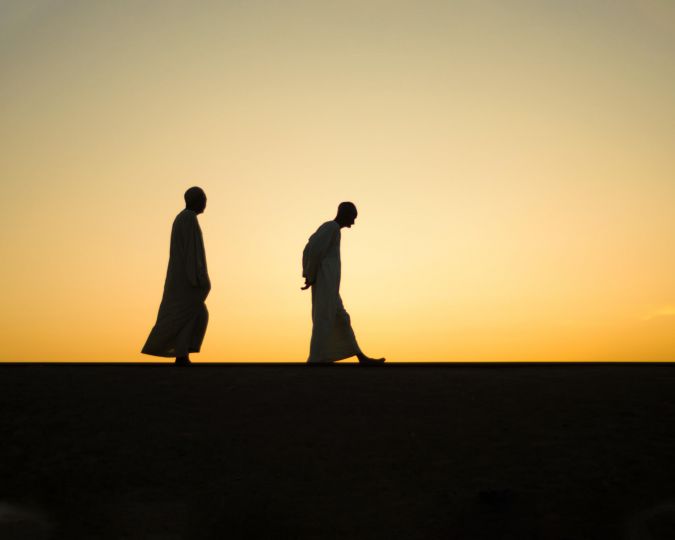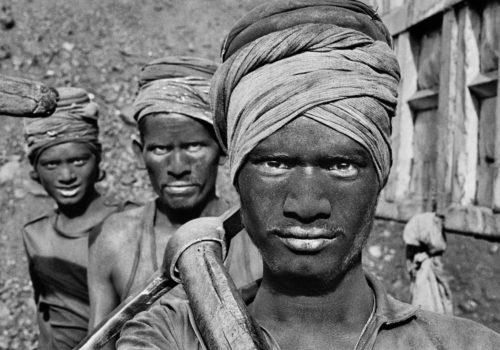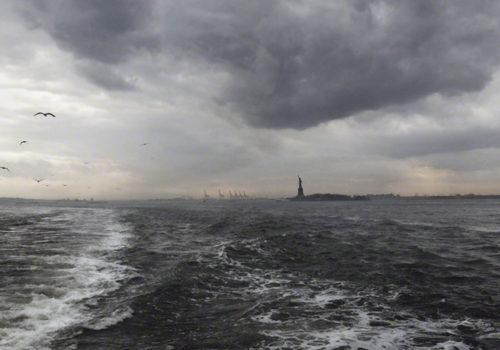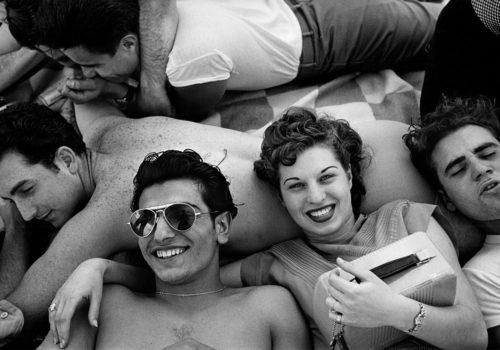Young Gallery recently presented twenty large photographic prints by Jacques Olivar, from his best advertising campaign and shootings realized in United-States.
“Let‘s say you‘re a travelling salesman. It’s 9 a.m. and you’re drifting down to Austin, Texas.
Your mind is going too fast. So many things to think about. Peggy Sue‘s diner is just a mile ahead. Better stop there for a coffee and make up your mind about the heavy schedule to come. Parking lot. Ignition off.
The diner seams quite empty at this time of the day. There’s Gerry Mulligan on the shortwaves, and sitting at the table by the window, there is a lonely woman with a fancy and elegant dress.
Her melancholic eyes seem far gone on a nowhere land. What is she doing there at this time of the day dressed up this way? Did she escape from a lover’s fight? A lover’s drama? Did she escape from a very hip party and everything is going wrong? ls she a solitude seeker’? What kind of lonely hearts drama is she experiencing now? Of course, you would never dare talk to her, and time is passing by; you got to be in time for your meeting. And so you’re splitting with no answer to the questions in your mind. Who was she? What was the trouble in her eyes?
This is the curtain-raiser, the opening of all my images. You become the witness and the voyeur at the same time. The aesthetic distance between a trendy sophisticated lady and the timeworn surroundings of a Texas dive bar is the key element of the emotional and timeless feelings I use in my pictures.
I always try to match two different stories together. There is the location of the story—the atmosphere, the light, the colors—and the story of the woman—her eyes, her feelings, her attitude, her clothes. I like to choose for my pictures the least unexpected environment: a junkyard
or a trashy diner, a lone street in a deserted ghost town or the poetry of a gas station. Then, I drive it into the ground to get the glamour of the situation.”
Jacques Olivar
Biography
I was bom in Casablanca in 1941. I never met Michael Curtiz, Humphrey Bogart or Ingrid Bergman, but I breathed the spiced smells of the souks. I listened to people speaking Arabic and tasted their wisdom. I slept in the caves of Aglou. I played truand to go and find the heat of the golden beaches of Casablanca’s coast. I listened all night long to the radio, to the first notes of the wonderful new and meteoric American music that is rock ‘n’roll. It was as if it had travelled infinite distances between the twinkling stars relayed by the aerials of the American air bases of the new world staying in Morocco and light-years away before swiping across Europe.
I was locked up in a kid’s jail called school. I escaped so many times and got caught so many times. Then, my parents died, and I was never caught again. From my gypsy Andalusian mother, I inherited her music and the fatal attraction of being the nowhere man. So I hit the road. Meanwhile, Alfred Hitchcock was filming The Man Who Knew Too Much in Marrakech, one of the Technicolor masterpieces that inspired me so much.
Icarus seduced me in a flash, but his wings melted in the sun. On my way, I met this other homeless kid, Isabel, and we escaped one more time. In Crete Island, I played music and hanged around the ochre sand beaches, lived in houses at the top of Mount Olympus and their biblical views, and tried to change the world a hundred times with my rainbow of wandering peers. Neither my son, my road companion nor myself, went back to school this universal area of formatting and cloning. I cut wood and picked olives off thousand-year-old olive trees.
The mysterious Tangier had been on the way. The east wind flowing between Gibraltar and the cliffs of Malabata blows away stories of spies, funny business, and visionary writers seeking crazy freedom. Gone with the wind. Gone with the wind were the very goodlooking people and the very refined prostitutes coming from Europe. Gone with the wind was the thrilling international area that was Tangier in the fifties. To the young boy I was, it was an unforgettable sight which forever marks the adolescent imagination: clandestine markets, mafia’s gold freely flowing, and smuggling on every small hidden street. Truths and lies blew with the east wind until becoming insane in the evil drunkenness of the Tangier of my adolescence.
There was Jean Genet who was buried in Larache. Then his friend, the brilliant and somber writer Mohamed Choukri. As well as the Beat generation poets such as Timothy Leary, Jack Kerouac, Peter Orlovsky, Allen Ginsberg, William S. Burroughs. I carefully packed them all in my bags. Then, Paris welcomed me warmly and tenderly as her prodigal son. I loved making pictures, and Paris loved them. From John Steinbeck, I retain these faces in my pictures that are impassive in front of fate. From Tennessee Williams, I retain the image of the fragility and loneliness of Southern people. From John Dos Passes, his love for storytelling. From Federico Garcia Lorca, I retain the sharp pain of four stabs and voices that echo on the Guadalquivir Fliver. Without them I certainly would never have taken pictures, at least not as I do. I took pictures of wonderful people. I worked for wonderful people. All throughout my career, I met great people. I ran away so often, and this time I was never caught again.
Young Gallery
Avenue Louise 75
1050 Bruxelles
Belgique
02 374 07 04
Forever Young
Jacques Olivar
teNeues éditeur
128 pp., Hardcover with jacket
67 color photographs
32 x 28 cm
Text in English, German, French, Spanish, and Italian
ISBN: 978-3-8327-9603-7

